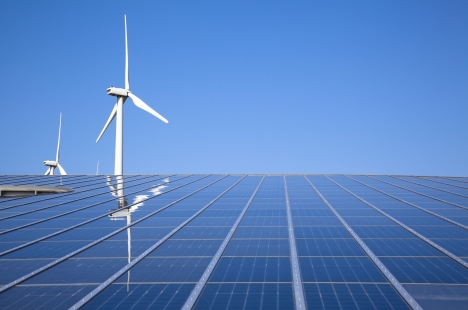Worldwide, nearly half a billion people lack electricity everyday. In a country like India, that equates to nearly a quarter of the population. Vast majorities of people without access to electricity live in rural areas, where connection to the tradition grid system, or “macrogrid,” is limited. For communities without a constant source of energy, microgrids provide a solution while still being environmentally conscious.
In the most basic terms, a microgrid is a small-scale version of a traditional macrogrid. It generates, distributes and regulates energy flow to users, just on a smaller scale. Microgrids are recognized as the ideal way to integrate renewable energy sources and advanced technologies and for this reason, have peaked the interest of both developed and developing countries.

Example of a microgrid system
Microgrids fall into two broad categories: off-grid systems, like those found in rural areas, which operate in isolation, and grid-tied systems, which have a single common coupling with the main grid but still operate independently. Many microgrids today are hybrids, which use a variety of renewable energy sources, like solar, wind, and geothermal, and sometimes non-renewable sources, like diesel. These new smart design microgrids can be installed in remote and urban areas and can connect or disconnect to the main grid when necessary.
The advantages of microgrids are numerous. They allow for energy independence, especially in isolated communities. They are flexible and can be tailored for a specific operation or for the region’s environmental characteristics. And they are reliable and can meet the local energy demands of the community.
The most important advantage of microgrid systems is that they provide a viable solution for renewable energy integration, which is considered an infinite source. They are based in communities and can empower those with a viable energy source while reducing greenhouse gas emissions.
Header photo courtesy of USAT
Microgrid example courtesy of Clean Technica

